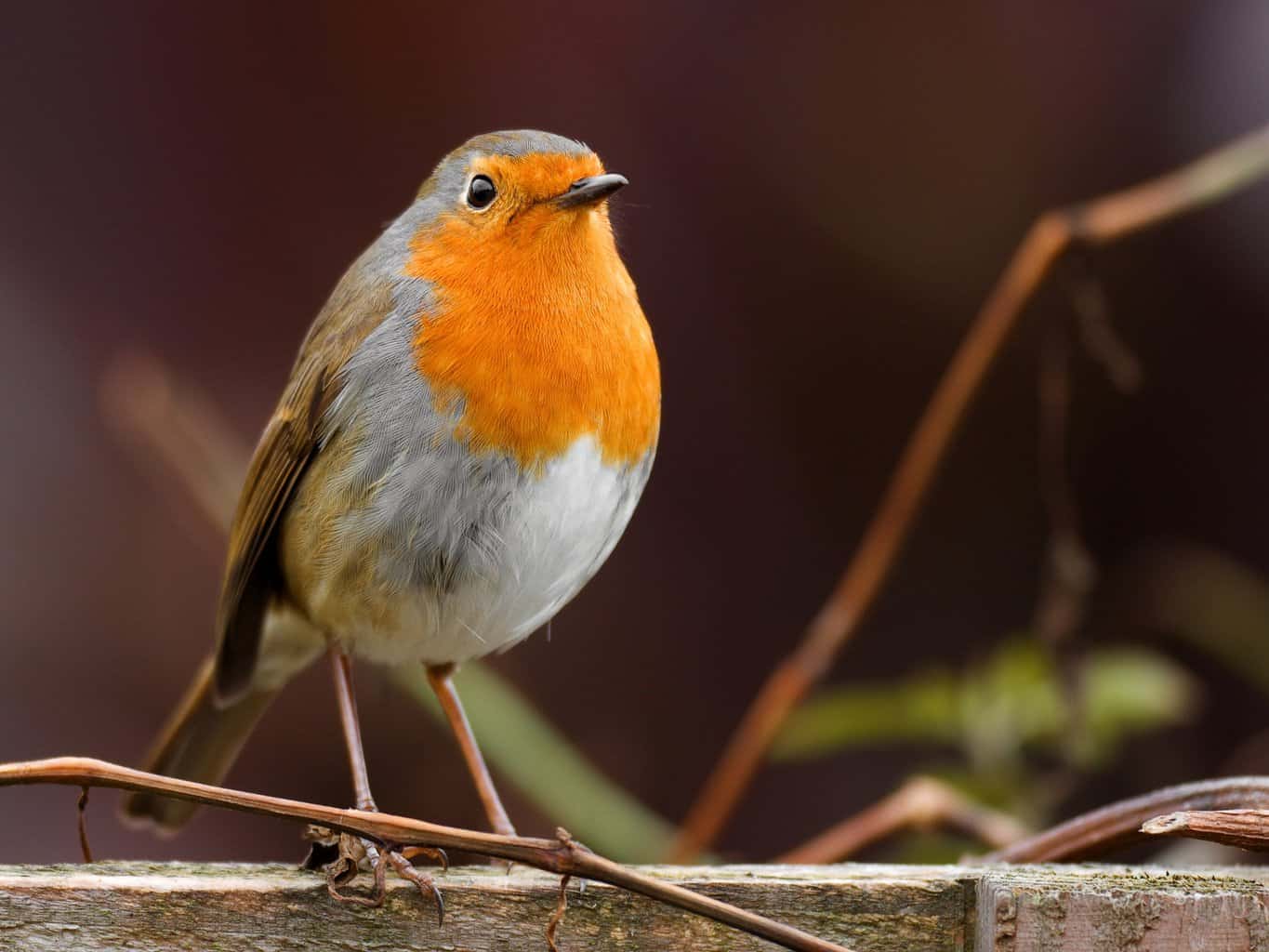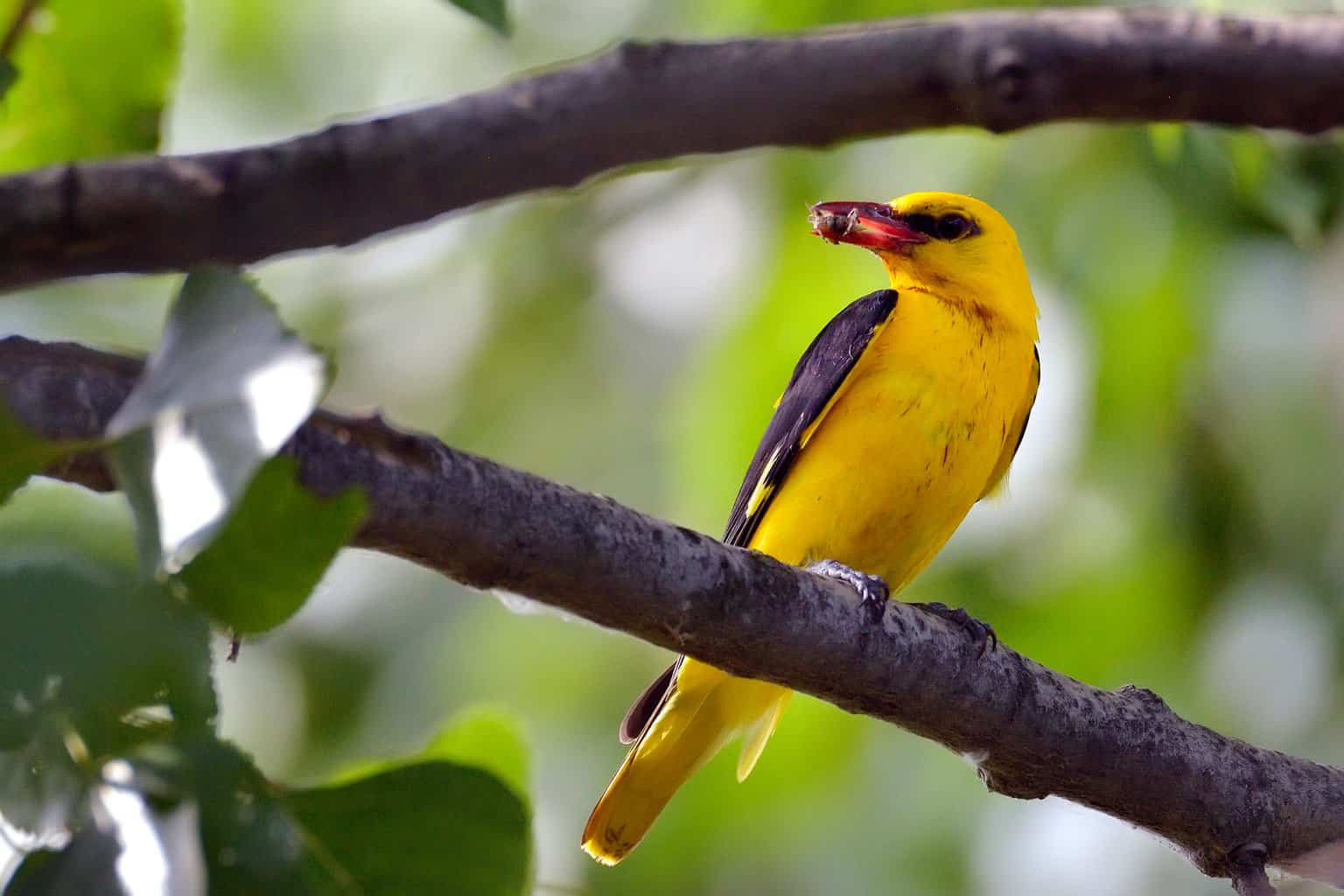Spring is in full swing, which means that our feathered friends are out and about! If you’re like me, you love nothing more than spending a lazy Sunday afternoon birdwatching.
But, as any good birder knows, not all birds are created equal. In fact, some birds can be pretty darn difficult to tell apart. Case in point: the robin and the oriole.
At first glance, these two common birds may look similar, but there are actually quite a few differences between them.
In this blog post, I’ll show you how to tell the difference between a robin and an oriole so that you can impress your friends (and maybe even snag a new life bird!)
Oriole vs Robin: The Similarities
Let’s start with the similarities between these two birds. Both robins and orioles are smaller than most songbirds, weighing in at around 2 ounces.
They both have reddish breasts (although the robin’s breast is more orange while the oriole’s is more yellow), and they both enjoy eating insects.
Additionally, both of these birds build their nests in trees (usually near the trunk) out of grasses, twigs, leaves, and other plant material.
Differences

While the two birds have a handful of things in common, there are also a number of differences between them. Each bird is unique in its own way, and once you know what to look for, it’s easy to tell them apart.
Color and Plumage
The first thing you’ll notice when looking at these two elegant birds side-by-side is that they have different plumage.
Robins are greyish-brown on their back and head with orange breasts, while orioles are mostly black with orange highlights on their wings, tail, and head.
Another way to tell these two birds apart is by their distinctive songs.
Beak & Body
Another way to tell these two birds apart is by their beaks. Robins have a shorter, stouter beak that is curved downward, while orioles have a longer, thinner beak that curves upward.
Robins also have longer legs than orioles. This difference is most noticeable when the two birds are in flight. Robins will appear to have a “bouncier” flight pattern, while orioles will look more streamlined and graceful.
When it comes to size, robins are slightly larger than orioles. Robins average about 10 inches in length, while orioles only reach about 8 inches.
Song & Vocalizations
Robins and orioles have different songs and vocalizations. Robins are known for their distinct “cheer-up, cheer-up, cheerily, cheer-up” song, while orioles sing a high, flute-like song that often includes whistle-like notes.
Habitat & Range
The oriole is found in southern Canada and Central America, while the robin is found throughout North America. The oriole prefers to live in dense forests or near water, while the robin can be found in a variety of habitats, including deciduous forests, open fields, and suburban areas.
Diet
Both robins and orioles are insectivores, meaning that they primarily eat insects. However, the robin also enjoys eating fruits and berries, while the oriole’s diet consists mostly of insects and nectar.
Top 5 Tips for Identifying Backyard Birds
Get a Field Guide
This is perhaps the most important tip for identifying backyard birds, as it will give you all the information you need to properly identify the species you’re seeing. There are many different types of field guides available, so make sure to choose one that covers the birds in your area.
Use Binoculars
Binoculars are a must-have for any serious birdwatcher, as they allow you to get a closer look at the birds you’re observing. This can be helpful in spotting distinctive features that can help you identify a particular species.
Learn Their Songs and Calls
Birds use songs and calls to communicate with each other, and each species has its own unique vocalizations. Learning the songs and calls of common backyard birds can be a helpful way to identify them when you’re out birdwatching.
Note Their Behavior
The way a bird behaves can also be helpful in identifying it. For example, does it hop or walk along the ground? Does it eat insects or seeds? Does it drink nectar? Knowing these things can help you narrow down your search when trying to identify a backyard bird.
Keep Track of What You See
When you’re out birdwatching, make sure to keep track of the familiar birds you see in a notebook or on your phone. You can include notes on their appearance, behavior, song, etc., which will be helpful in identifying them later on. This is also a great way to start building your very own backyard birding list!
With these tips in hand, you’re ready to start identifying backyard birds like a pro! Remember, the key is simply to get started and have fun with it.
There’s no right or wrong way to birdwatch, so just enjoy spending time outdoors observing these beautiful creatures in their natural habitat.
Attracting Orioles and Robins to Your Yard

Now that you know how to tell the difference between these two birds, you may be wondering how to attract them to your yard. After all, what good is being able to identify a bird if you don’t have any around to practice with?
There are a few things you can do to attract both orioles and robins to your yard. First, try offering a variety of foods that these birds enjoy.
Orioles are particularly fond of oranges, so offer slices of fresh fruit or nectar in an oriole feeder. You can also put out a dish of mealworms or insects for the robins (and other insect-eating birds) to enjoy.
Another way to attract these birds is by providing shelter. Robins and orioles will both nest in trees, so consider planting a few fruit trees or evergreens in your yard. You can also put up a nesting box for these birds to use. Just be sure to put it up high enough that cats and other predators can’t reach it.
Lastly, try to create an inviting and safe yard for these birds. Avoid using pesticides or herbicides, as they can be harmful to birds (and other wildlife). Also, try to keep your dog on a leash or in a fenced-in area, as dogs can be dangerous (and even deadly) to birds.
By following these tips, you can create a backyard that is perfect for both orioles and robins (and other birds, too)!
FAQ
What Bird Looks Like an Oriole, But Smaller?
The Blackburnian warbler is a small songbird with a bright orange-red throat and chest. It is very similar in appearance to the Baltimore oriole but can be distinguished by its smaller size and lack of black feathers on its head.
Are Cardinals and Robins the Same?
No, cardinals and robins are not the same. Cardinals are larger than robins with a red body and black face, while robins are smaller with orange breasts and grey bodies. Additionally, cardinals are found in wooded areas while robins can be found in a variety of habitats.
What Is the Difference Between a Robin and a Sparrow?
The most obvious difference between a robin and a sparrow is their size. Robins are about twice the size of a sparrow. Sparrows also have more color variation in their plumage than robins do, ranging from brown and grey to black and white.
Additionally, sparrows have a more blunt beak than robins, and they typically build their nests on the ground rather than in trees.
Wrapping Up
Now that you know how to tell the difference between a robin and an oriole, you’re well on your way to becoming an expert at identifying these two popular springtime birds!
So get out there and start birding! Before you know it, you’ll be able to spot these feathered friends in no time at all.

